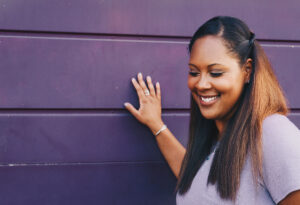Two years ago, I wrote a grant for my library to purchase an augmented reality sandbox. This sandbox shows topographic maps, water catchment areas, levees, and more. It operates through an XBox Kinect, so it picks up movement. When you shift the sand, you can see the contour lines and color-coded depths change. It’s an amazing piece of technology, and our school is one of two middle schools in the district to have one. But, when you look at the table upon which the some 1,000 pound, 48” x 36” sandbox sits, it’s deeply bowed in the middle. The table was not made to support the weight of such a heavy mechanism. I keep thinking one day I will walk in and find my wonderful piece of technology crashed on the floor, sand spilled all over my bluish carpet. I don’t even know what I would do to clean up such a mess. The solution is to build a specialized cube-shaped table that will support the weight. My sweet husband, Carl, has graciously agreed to build this for me once his spring semester classes end.
I’ve known I’m called to work with kids since I was a teenager, although I greatly resisted that calling well into adulthood. I love kids. They truly amaze me and are among my biggest heroes. What I’ve noticed from teaching middle school these past thirteen years is a drop in the understanding of consequences and expectations. My students (and admittedly my own kids even) don’t stop to think about what reaction an action will render. They don’t always think about if their words are going to speak life or death into another person. They don’t seem to realize words really do hurt.
It all got me thinking about life. How sometimes we are bowed in the middle, in danger of crashing to the ground and making a huge mess. We were made to worship our divine King, not to take on the weight of the world. One of my favorite Scriptures is John 16:33:
“I have told you these things so that in me you will have peace. In this world you will have trouble, but take heart! I have overcome the world.”
I see so many kids who, like my augmented reality sandbox table, are bowed in the middle from having to bear too much pain, too much heartache, too much of everything negative in their lives. For some of these kids, the light at the end of the tunnel is so hard to see. For many, that light is steadily getting brighter. I believe helping kids understand consequences by setting boundaries and expectations can make all the difference in how they perceive that light. Even in this often cruel world, we have assurance that light is always present. When it’s dim. When it’s blindingly bright.
And all the spaces in between.
~Sarah


